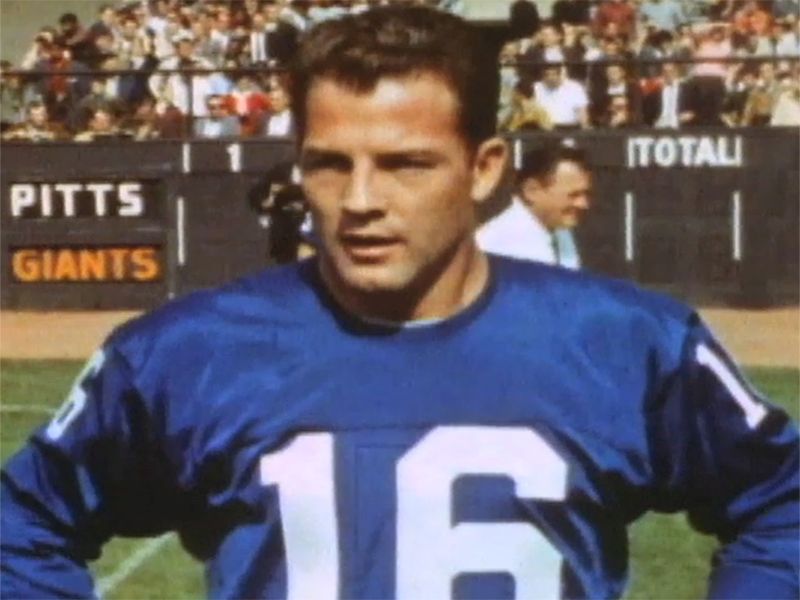Football Great Frank Gifford Had Brain Disease
Hall of Famer passed away in August at 84; CTE diagnosis can only be made after death
HealthDay Reporter

WEDNESDAY, Nov. 25, 2015 (HealthDay News) -- The family of National Football League Hall of Famer Frank Gifford announced Wednesday that he had chronic traumatic encephalopathy (CTE) prior to his death.
CTE, which is linked to repeat head trauma and has been detected in many ex-NFL players in recent years, can only be diagnosed after death.
"While Frank passed away from natural causes this past August at the age of 84, our suspicions that he was suffering from the debilitating effects of head trauma were confirmed," the Gifford family said in a statement, according to The New York Times. "During the last years of his life, Frank dedicated himself to understanding the recent revelations concerning the connection between repetitive head trauma and its associated cognitive and behavioral symptoms -- which he experienced firsthand."
According to the Times, Gifford's family released no details of any symptoms he may have displayed, or the severity of his disease. However, typical CTE symptoms include depression, aggressive behavior, impulse control issues and loss of memory.
CTE made headlines in 2012 when former pro football player Junior Seau died by suicide at the age of 43 and was later discovered to have had the degenerative brain disease.
The Gifford family said they made the announcement in hopes that it would spread awareness of CTE, and its potential links to injuries sustained in football.
"It's incredibly important for awareness that the Gifford family had Frank's brain studied and went public with the diagnosis," Chris Nowinski, a founder of the Concussion Legacy Foundation, told the Times. "It's the accumulation of cases and data over time that will teach us what we need to learn about CTE."
Gifford, a running back, was one of professional football's top stars in the 1950s and 1960s, playing 12 years for the New York Giants. According to the Times, he sustained one of the most crushing injuries seen in NFL play, when on Nov. 20, 1960, he was tackled hard by Philadelphia Eagles linebacker Chuck Bednarik.
Gifford dropped the ball and remained motionless before being carted off with a concussion. By February of the following year he announced his retirement, but by 1962 was back in the game once more.
In a statement, NFL Commissioner Roger Goodell gave thanks to Gifford's family for helping "the medical community understand more about CTE," adding that, "we are grateful for their support of the league's efforts to improve safety in our game."
CTE remains a mysterious condition. Some players hit repeatedly go on to develop the illness, while others do not, and the role of genetics or lifestyle factors remains unclear.
In the meantime, Goodell said the NFL is seeking to prevent CTE in its players.
"The NFL has made numerous rules changes to the game, all to enhance player health and safety at all levels of football," he said. "These include 39 rule changes and better training and practice protocols that are yielding measurable results. This work will continue as the health and safety of our players remains our highest priority. We have more work to do -- work that honors great men like Frank Gifford."
More information
There's more on chronic traumatic encephalopathy at Boston University's CTE Center.
SOURCES: SOURCE: Nov. 25, 2015, news release, National Football League; The New York Times
Last Updated: Monday, November 30, 2015 8:33:48 AM EST
Copyright © 2015 HealthDay. All rights reserved.